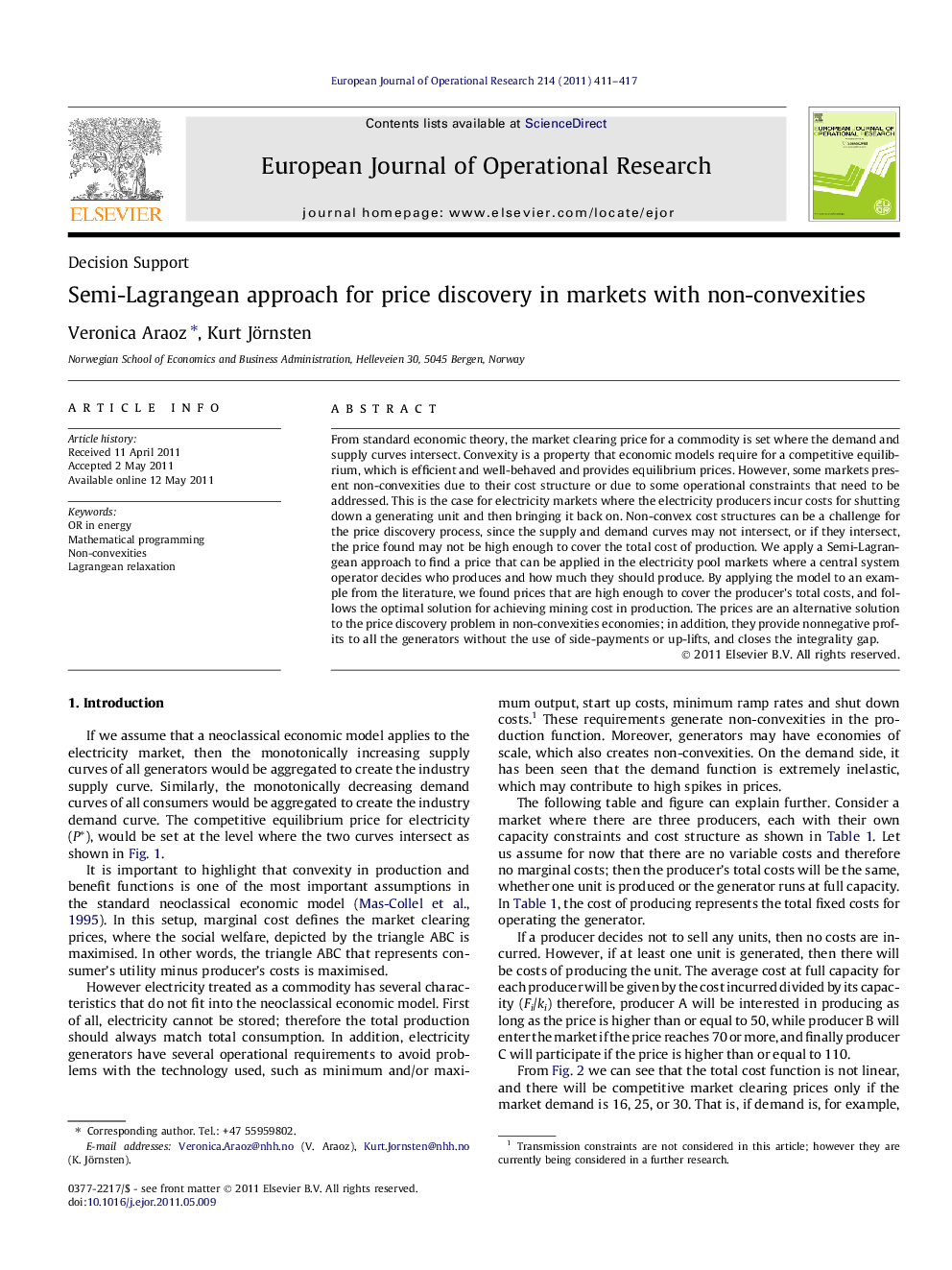| Article ID | Journal | Published Year | Pages | File Type |
|---|---|---|---|---|
| 476980 | European Journal of Operational Research | 2011 | 7 Pages |
From standard economic theory, the market clearing price for a commodity is set where the demand and supply curves intersect. Convexity is a property that economic models require for a competitive equilibrium, which is efficient and well-behaved and provides equilibrium prices. However, some markets present non-convexities due to their cost structure or due to some operational constraints that need to be addressed. This is the case for electricity markets where the electricity producers incur costs for shutting down a generating unit and then bringing it back on. Non-convex cost structures can be a challenge for the price discovery process, since the supply and demand curves may not intersect, or if they intersect, the price found may not be high enough to cover the total cost of production. We apply a Semi-Lagrangean approach to find a price that can be applied in the electricity pool markets where a central system operator decides who produces and how much they should produce. By applying the model to an example from the literature, we found prices that are high enough to cover the producer’s total costs, and follows the optimal solution for achieving mining cost in production. The prices are an alternative solution to the price discovery problem in non-convexities economies; in addition, they provide nonnegative profits to all the generators without the use of side-payments or up-lifts, and closes the integrality gap.
► We propose a methodology to obtain a price for markets with non-convexities. ► Semi-Lagrangean and subgradient approaches are used in a simulated example to obtain a price for a pool electricity market. ► Prices obtained are high enough to cover the generators costs. ► No side payments, nor uplifts are needed to compensate generators for their losses.
